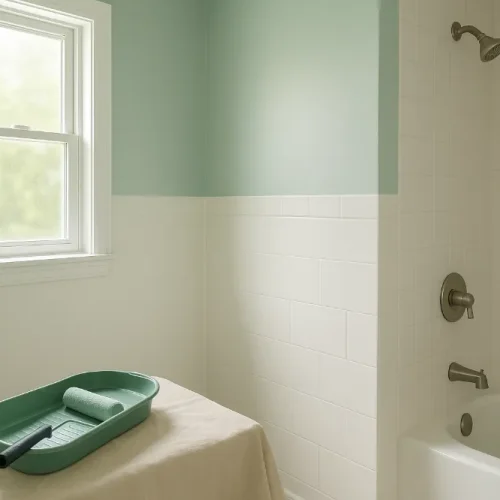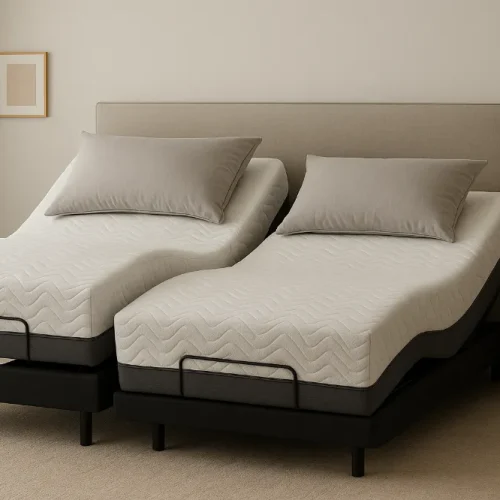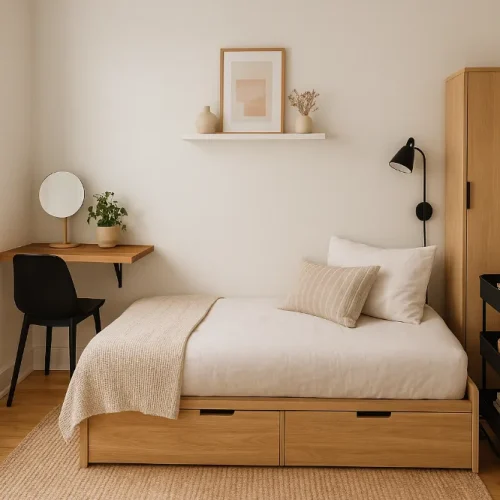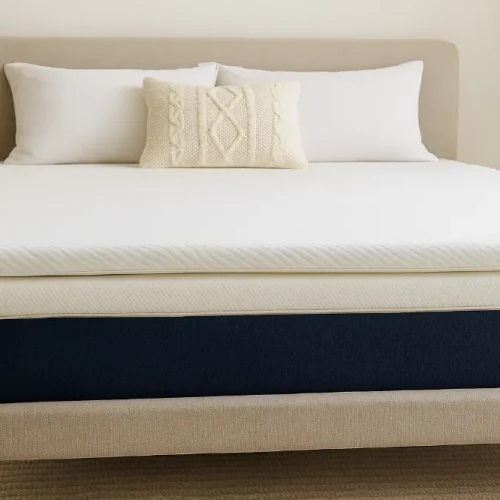
A home, in the truest sense of the word, should feel like a real retreat, not just some other place you exist in, but how many of us settle for living spaces that are genuinely just not quite right? We frequently tell ourselves that we’ll get used to that awkward layout or tolerate another sweltering summer in silence, but here’s the thing: comfort isn’t a luxury; it’s the absolutely essential foundation that lets you live well and actually thrive in your space, not merely survive in it.
Moving beyond basic existence requires you to think way past mere aesthetics to the creation of an environment that will actively foster your day-in-and-day-out life. Beautiful, magazine-worthy rooms certainly count, but what of the temperature when you are trying to sleep or the humidity that makes everything feel just a little bit clammy? Real comfort is in taking into consideration those practical, environmental elements right next to visual ones – it’s making conscious decisions that align with how you actually use your home, not just how you imagine using it someday.
Core Element: Climate Control is the New Comfort Standard
Temperature is, without much debate, the most basic and yet underappreciated aspect of home comfort. Think about it for a moment: you could have the most stunning interior design concept imaginable, but if you’re constantly too hot, too cold, or just generally sticky, what does it all become? When was the last time you managed to feel truly relaxed, let alone productive, in a stuffy, overheating room? The constant struggle against thermal discomfort is a silent drain on your energy.
Fortunately, modern domestic air conditioning systems are a million miles away from those old, noisy, and ridiculously electricity-sucking boxes of yore. Today’s high-tech options are surprisingly quiet, incredibly efficient, and maintain delightfully consistent temperatures without the dramatic, jarring swings their predecessors would often produce.
Having truly effective climate control can drastically change everything from the overall quality of your sleep to your daytime productivity. When the temperature is consistently perfect, you stop noticing the environment and start focusing on your life – just like it should be. The newest innovations mean this essential comfort is now more accessible and sustainable than it has ever been before, completely changing your daily experience.
Beyond Basic Cooling: Dehumidification and Air Quality
Effective climate control is always about much more than just moving heat around; this is an all-encompassing system designed to manage the whole atmospheric conditions inside your home. Among the largest, yet least understood, advantages of a high-quality AC unit lies in its powerful dehumidifying effect.
If you live anywhere humid, you know the feeling: moderate temperatures feel sticky and heavy, and you sweat even when you shouldn’t be. Modern systems, especially high-efficiency ones with variable-speed compressors, do a great job of eliminating all that excess moisture from your air, thereby boosting comfort enormously but also playing a very crucial role in the prevention of mould and mildew development, which can seriously affect your health.
Additionally, every time your system operates, it circulates air through filters. Employing high-quality, high-efficiency MERV-rated filters means your system is effectively eliminating airborne particulates – such as dust, that pesky pollen, and irritating pet dander. This important, ongoing filtration translates directly into a noticeable improvement in indoor air quality, an essential factor in overall health and long-term comfort. A well-regulated climate means cleaner, lighter-feeling, healthier air, fundamentally improving where you live your life day in and day out.
The Power of Zoned Comfort and System Evolution
One thing that many people don’t realise about modern air conditioning is just how personalised it can be. Thankfully, the days of cooling or heating the whole home equally are drawing to a close. In their place, state-of-the-art systems, such as advanced ductless mini-splits or incredibly sophisticated ducted systems making use of motorised dampers, can create independently controllable comfort zones. Maybe you like your bedroom to be much cooler to sleep in, while others in your household might run warmer or cooler than you do in the main living area.
These flexible home air conditioning solutions finally enable you to genuinely tailor comfort levels room by room. Not only does this personalised approach eliminate those tiresome thermostat battles, but it also drastically lowers energy bills since you condition only the spaces you are actively using. This zoning capability really represents the pinnacle of modern comfort technology, maximising system efficiency while simultaneously optimising the distinct well-being of every person in the house. Choosing a system that can create and manage these separate comfort zones is perhaps the single best upgrade you can make to your home’s liveability.
Seamless Integration: AC Aesthetics and Interior Design
Once you’ve mastered the basic components of temperature and humidity, your focus easily shifts to the interior elements that actually make a difference in your daily life. The phenomenal advancement in air conditioning technology has, surprisingly, had a strong impact on our concept of interior design itself. We’re past the days of large, loud window units or obtrusive, glaringly obvious vents disrupting the flow of a room. Modern HVAC solutions are now increasingly engineered for visual stealth and clean aesthetics.
A few examples include the following: mini-split systems have sleek indoor units that come in minimalist designs, often mounted high to blend into the trim or sometimes discreetly recessed right into the ceiling, allowing them to effectively disappear into the architecture. Replacing more obvious floor and wall vents with subtle linear diffusers that merge seamlessly into the ceiling or baseboards preserves the clean lines of a space.
The command centre has evolved from a utilitarian box into a chic, digital object that learns your habits and intelligently manages the entire climate ecosystem from one attractive, central point. This integration allows you to focus entirely on the design with complete trust that the temperature is flawlessly regulated in the background.
Transition: Furniture That Complements the Controlled Climate
All other design elements in your home take a cue from the cool, calm, and remarkably consistent atmosphere provided by a truly great air conditioning system. Because the modern AC system is designed around highly personalised efficiency and precision control, the best modern furniture should also focus on utility, superior ergonomics, and suitability for comfortable, long-term use. Entering many typical furniture showrooms, you’ll find pieces arranged in pristine vignettes that look as if they have been yanked straight from the pages of some particularly glossy magazine. Sure, they’re beautiful – but they’re often completely impractical for how real people actually live.
True comfort comes from furniture that fits your needs, supports your body, and flows naturally with daily routines. Now, consider the reality of your evenings: are you curled up with a book on the sofa for hours, working on your laptop, or sprawling on the floor playing with your kids? Your furniture needs to cater to such real activities, not some idealised, static version of how life should look.
A sofa that seems brilliant but leaves you with a terribly sore back after twenty minutes simply isn’t doing its job, no matter how many compliments it receives from visiting friends. When you are looking for modern furniture in Melbourne, or anywhere else for that matter, your goal needs to be finding those pieces that balance form with real-world function just right and enhance the liveability the AC system has made possible.
The Importance of Scale and Space Planning
Once the atmospheric conditions are perfect and the furniture pieces are right, we must consider the architecture of comfort, the layout. Have you ever noticed how some rooms just effortlessly feel “right”, while others inexplicably make you feel uncomfortable or restless? This isn’t an accident; it’s entirely about proportion, flow, and how the furniture arrangement either naturally supports or actively fights your movement patterns. Excellent space planning is truly invisible; you simply move through your home intuitively and with profound ease.
First, observe closely how you really use each room. Where do you feel yourself naturally gravitating to? What paths do you find yourself taking time and time again between areas? Are there consistent bottlenecks where people tend to collide with one another? Your furniture layout must be designed to enhance these natural flows and never block them.
This might mean pushing pieces against the wall to maximise open walkways, or it might mean the opposite: floating a huge sofa in the middle of an enormous room, creating distinct cosy zones on purpose. Scale is crucial; giant furniture in a small room feels suffocating, while tiny furniture in a huge space is completely swallowed up and makes the space cold. It’s always about striking a balance visually in the proportions; go a little smaller if you’re ever in doubt to keep spaces airy.
Textures, Materials, and the Tactile Experience
Comfort is one thing when it’s visual, but it’s truly in the tactile experience that a living space becomes genuinely inviting and warm. Think about the most luxurious hotels you’ve ever stayed in; it’s not just their appearance but the way things feel – incredibly plush towels, smooth, polished countertops, soft touches that make a house feel like home, and soft, dense carpets under your bare feet. Your own home absolutely deserves this same kind of tactile consideration every day.
Mix textures intentionally and purposefully; try pairing smooth, cool leather against a cosy, nubby linen or cool stone tile next to warm, organic wood. These strategic juxtapositions create both significant visual interest and a genuine range of sensory experiences, perfectly complementing the cool, dry air provided by your AC. That chunky knit throw blanket isn’t just there for a stylistic accent; it’s the exact thing you’ll naturally reach for on a chilly evening. Velvet cushions aren’t merely a passing trend; they are genuinely soft and comforting to lean against after a long day. Strategic placement of different materials is key; while hard surfaces like tile or wood are practical and easy to clean in high-traffic areas, they feel completely uninviting for relaxation. Conversely, a plush carpet feels marvellous in a bedroom but is utterly impractical in a kitchen. Use area rugs over hardwood to get the very best of both worlds.
Colour Psychology and the Mood Maker: Lighting
Colours have a deep potential to influence your mood, much more so than most people tend to think. It’s not about following rules like “blue is always calming”, even though those generalisations do hold some truth. It’s about deeply understanding how various hues make you feel specifically and then using that highly personal knowledge intentionally throughout your entire home.
Lighter colours, as a general rule, will make a room appear considerably larger and more open, which is one of the reasons they are suggested for smaller rooms. Yet, it doesn’t mean every room has to be stark white. Soft greys, warm creams, or pale, subtle blues can achieve that airy spaciousness feeling while providing far more character and depth. On the other hand, darker, richer colours are magnificent for creating a sense of intimacy and cosiness that is just perfect for reading nooks or bedrooms where deep relaxation is intended.
Along with colour, lighting is the ultimate mood maker. Generally speaking, harsh overhead lighting is barely sufficient to navigate around a room but is really bad at creating comfort. Layered lighting – ambient, task, and accent – completely transforms a space. You should employ table lamps, floor lamps, and subtle LED strips to give you ultimate control over the mood and functionality of every area. And never forget the power of natural light. Swap heavy light-blocking drapes with sheer, flowy curtains or adjustable blinds that allow you to precisely metre out the light throughout the day. The soft afternoon glow in your living room will always beat any artificial lamp you could ever buy.
Storage Solutions That Reduce Daily Friction
Clutter is not just visually distracting; it’s also deeply and surprisingly mentally exhausting. Each misplaced item represents another small, tracked task your brain must manage, and these quickly pile up. Comfortable, relaxed living requires having a proper place for absolutely everything and, most crucially, making it trivially easy to return things to those places. The less you have to think about where something goes or struggle to find it, the more mental energy you can save.
The most successful storage solutions tend to be either completely invisible or at least very unobtrusive: inset shelving, ottomans with deep interior compartments, and intelligently designed drawer-equipped beds leave no new visual clutter while saving precious space. You need to be thoughtful of your real daily habits and then create storage solutions that support those habits. A nice-looking basket near the door designed to catch keys and mail means you spend far less time frantically searching for lost items. Kitchen drawer organisers that keep cooking tools perfectly within reach lessen the daily frustration of meal preparation. Be realistic about what you really use versus what you’re keeping “just in case”, and then store based on use frequency; the everyday items get the prime, most accessible spots.
Acoustic Comfort and Bringing Nature Indoors
Sound impacts comfort in ways that are often only consciously registered when a room is either too loud or unbearably echoey. Beautiful, hard surfaces such as tile, glass, and wood dramatically reflect sound, creating harsh, cold acoustics that feel sterile and uninviting. This is why many grand hotel lobbies often feel beautiful but somehow sterile; it’s usually an acoustic issue. Soft furnishings hold the secret to comfort here – they absorb sound, creating far warmer, more intimate acoustics. Rugs, heavy curtains, large upholstered furniture, and even wall-mounted artwork all have a powerful dampening effect on reflected sound, which is essential in today’s open-plan homes where sound can freely reverberate.
Finally, at some deep, primal level, having living elements in your space is immensely comforting. Plants don’t just look attractive; they naturally purify the air, add moisture, and provide a vital link to the natural world that humans innately crave. For those who swear they have a “black thumb”, start with virtually indestructible indoor plants like pothos, snake plants, or spider plants, which tolerate low light and minimal care. Beyond the living greenery, integrate other natural elements; raw wood furniture and organic accents lend warmth, while stone or earthenware pieces provide earthy, grounding texture. The core idea is simple: make your indoor environment feel less sterile, more alive, and inherently comfortable.
Creating Personal Retreats Within Your Home
Every truly comfortable home needs at least one place that is yours alone – a place to which you can immediately retire when you want to be alone, or to be quiet, or to unwind completely. This does not have to be a whole extra room. It can be a favourite, well-lit chair in a quiet corner, a comfortable window seat, or just a part of your bedroom that is dedicated to pure relaxation.
These are intensely personal spaces that need to be thoughtfully designed around whatever helps you de-stress effectively: silence, soft music, or the sound of nature. Perhaps you journal, meditate, read, or sit quietly with a cup of coffee. Whatever your chosen activity is, build an environment for it: the single right chair, excellent focused lighting, and a small side table for your book or mug. These basic elements can be surprisingly effective in taking what otherwise would be just a corner and turning it into an actual functional retreat. Crucially, let these spots remain truly sacred. It is easy for personal areas to slowly start gathering clutter or being used for secondary purposes over time. Be vigilant against this tendency. Ensuring every member of the household has their own little sanctum even if it’s just one particular chair is what makes a house a really supportive home.
Conclusion
Real, deep-seated comfort at home isn’t about that one expensive, grand gesture or some quick, superficial facelift. It is about dozens of very conscious decisions over how you want to feel in your space and what functional elements you include to support those feelings: starting with responsive temperature control that is harnessed to your whim, furniture that is correctly scaled to support your actual lifestyle, layered lighting fluidly shifting through moods and events, and smart storage that puts an immediate end to daily annoyances.
The spaces you inhabit deeply, day in and day out, continuously shape your entire well-being. Your home needs to be working to make your life better, easier, and more pleasant every single day. That means confidently moving past aspirational design into the elements that really work for the way you’re really living. Start by fixing the single element currently bringing you the most discomfort – maybe installing a new air conditioning system – and from there, refine every other element incrementally. It is not about achieving robotic perfection; it is about mindfully creating a space that feels utterly, completely yours.
FAQs
Because stable temperature and humidity affect sleep, focus, and daily well- being, making them essential for a truly livable environment.
New systems maintain consistent temperatures, run quietly, and use far less energy than older units.
Yes-excess moisture makes room feel sticky and warm, while proper dehumidification keeps the air crisp and healthy.
They remove dust, pollen, and other airborne particles, improving indoor air quality and reducing allergy triggers.
They let you set different temperatures for different rooms so everyone can enjoy their preferred comfort level.
Absolutely—sleek indoor units, recessed vents, and smart thermostats allow climate control to function without disrupting aesthetics.
Furniture that supports your posture and daily habits enhances the ease and enjoyment of living in your space.
Layered lighting and natural light help create warm, relaxing atmospheres and improve the functionality of each room.
Organized storage reduces daily frustration, eliminates clutter, and makes your home feel calmer and more efficient.
Having a dedicated personal corner helps you relax, reset, and maintain emotional balance in your day-to-day life.













